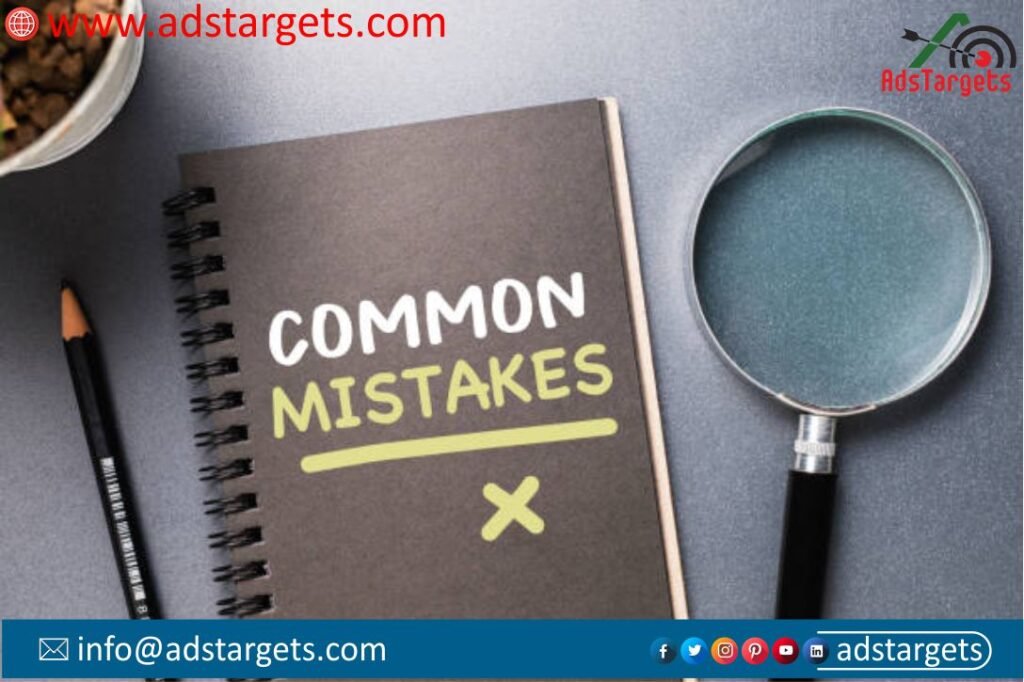Blog conversion techniques refer to strategies employed to turn blog visitors into leads or customers.
Blogging has evolved far beyond a sheer platform for sharing thoughts and opinions; it has become a commanding tool for brands to engage with their audience, showcase expertise, and drive conversions. Nevertheless, the actual gauge of a blogs success not only lies in attracting readers but also in converting them into loyal customers.
Keeping your audience engaged in your blogs and persuading them to convert is not a simple task. You can suspect your blog conversion techniques to be inadequate if you create the most helpful SEO-friendly blogs and expect a high conversion rate, yet nothing happens.
Minor changes can have a significant impact, for example, the placement of a button or the size of the CTA text. Even the speed at which your page loads can decrease your conversion rate by 7% for every second delay in loading.
This is why you should consider these blog conversion techniques as a helpful guide to help maximize the impact of your content creation and turn every single visitor on your page into a valuable customer who looks up to you as their solution provider.
Aside exploring the effective blog conversion techniques, we will also look at mistakes bloggers make that keep their readers away instead of converting them to loyal customers.
Let’s begin

Table of Contents
ToggleBlog Conversion Techniques
#1. Understanding the Conversion Funnel:

The conversion funnel represents the journey that a visitor takes from initially discovering your blog to becoming a paying customer. It normally consists of three main stages:
#1. Awareness: At this stage, visitors become aware of your blog through various channels such as search engines, social media, or referrals.
#2. Consideration: Once aware of your blog, visitors explore your content, engage with your brand, and consider the value you offer.
#3. Conversion: Finally, visitors take the desired action, this could be making a purchase, signing up for a newsletter, or requesting more information.
Each stage of the funnel presents opportunities for optimization and conversion, and effective blog conversion techniques should cater to the needs and preferences of visitors at each stage.
#2. Crafting Compelling Content:
Crafting compelling content is one of the major blog conversion techniques that lies at the heart of every successful blogger who intends to win his target audience.
Whether it is informative articles, engaging videos, or captivating visuals, your content should be valuable, relevant, and tailored to the needs and interests of your readers. In doing so, you must:
#1. Identify Your Audience: Start by understanding your target audience’s demographics, interests, pain points, and preferences. This knowledge will guide your content creation efforts and ensure that your blog resonates with the right audience.
#2. Provide Solutions: Address your audience’s pain points and provide practical solutions to their problems. Whether through how-to guides, case studies, or expert insights, offer actionable advice that adds value and establishes your credibility as a trusted resource.
#.3. Incorporate Visual Elements: Visual content such as images, infographics, and videos can enhance engagement and convey information more effectively than text alone. Use visual elements strategically to break up long-form content, illustrate key points, and make your blog posts more visually appealing.
#3. Optimize for Search Engines (SEO):
Search engine optimization (SEO) is one of the blog conversion techniques that play a vital role in driving organic traffic to your blog and increasing its visibility in search engine results pages (SERPs).
By optimizing your blog posts for relevant keywords and improving their overall search engine ranking, you can attract more qualified traffic and increase your chances of conversion. This conversion technique can be achieved successfully by using:
#1. Keyword Research: Conduct keyword research to identify the terms and phrases that your target audience is searching for. You can use tools like Google Keyword Planner, SEMrush, or Ahrefs to discover high-volume keywords with low competition.
This will give you a good chance of feeding your hungry audience with just the right meal.
#2. On-Page Optimization: Optimize your blog posts for target keywords by incorporating them naturally into your titles, headings, meta descriptions, and body content. Additionally, optimize other on-page elements such as URL structure, internal linking, and image alt tags to improve your blog’s SEO performance.
#3. High-Quality Content: Focus on creating high-quality, informative content that provides value to your readers. Search engines prioritize content that is relevant, authoritative, and user-friendly, so aim to create content that meets these criteria and aligns with your audience’s search intent. You will leap with joy, the magic blog conversion techniques do.
#4. Engage Readers with Calls-to-Action (CTAs):
In considering blog conversion techniques, Calls-to-action (CTAs) are powerful prompts that encourage readers to take a specific action, be it subscribing to your newsletter, downloading a resource, or making a purchase.
By strategically placing CTAs throughout your blog posts, you can guide readers through the conversion funnel and encourage them to take the next step. This blog conversion technique can be achieved when you use
#1. Clear and Compelling: Make your CTAs clear, concise, and compelling, clearly stating the desired action and highlighting the value proposition. Use action-oriented language and incorporate persuasive elements such as urgency, exclusivity, or social proof to motivate readers to act.
#2. Placement and Visibility: Position CTAs strategically within your blog posts, ensuring that they are prominently displayed and easily accessible to readers. Experiment with different placement options such as inline CTAs, sidebar banners, or exit-intent pop-ups to determine what works best for your audience.
#3. Test and Iterate: Continuously test and iterate your CTAs to optimize their performance and maximize conversions. Experiment with different copy, design, and placement variations, and use A/B testing to compare results and identify the most effective CTAs for your blog.
Trust is a critical factor in driving blog conversions, as readers are more likely to take action when they feel confident in your brand and its offerings. By building trust and credibility through transparent communication, social proof, and authority-building strategies, you can establish a strong connection with your audience and increase conversion rates.
#5. Build Trust and Credibility:
#1. Authenticity and Transparency: Yet one of the blog conversion techniques, be authentic and transparent in your communication with readers, sharing honest insights, experiences, and perspectives. Avoid overly promotional or sales language and focus on building genuine connections based on trust and mutual respect.
#2. Social Proof: Showcase social proof in the form of customer testimonials, reviews, case studies, or endorsements to demonstrate the value of your products or services. Highlighting positive experiences from satisfied customers can instill confidence in prospective buyers and alleviate any doubts or hesitations they may have.
#3. Authority Building: Position yourself as an authority in your niche by sharing valuable insights, expertise, and thought leadership content. Publish authoritative blog posts, participate in industry events or webinars, and engage with influencers or experts in your field to enhance your credibility and establish trust with your audience.
#6. Implement Retargeting and Remarketing:
Retargeting and remarketing are blog conversion techniques that allow you to re-engage with visitors who have previously interacted with your blog but have not yet converted. By serving targeted ads or personalized content to these users across various channels, you can remind them of your brand, reinforce your value proposition, and encourage them to take action.
#1. Pixel-Based Retargeting:
Install retargeting pixels on your blog and website to track visitor behavior and create custom audiences based on their interactions. Use this data to deliver relevant ads or content to users who have shown interest in your offerings but have not yet completed a desired action.
#2. Dynamic Remarketing:
Implement dynamic remarketing campaigns that display personalized ads featuring products or content that users have previously viewed or shown interest in. By showcasing relevant offerings based on users’ past behavior, you can increase the likelihood of conversion and drive repeat visits to your blog.
#3. Email Retargeting:
Leverage email retargeting to re-engage with users who have subscribed to your newsletter but have not yet converted. Send targeted emails featuring personalized recommendations, exclusive offers, or content updates to encourage them to revisit your blog and take the desired action.
#7. Analyze and Optimize Performance:
Continuous analysis and optimization are essential for maximizing the effectiveness of your blog conversion techniques. By monitoring key metrics, tracking user behavior, and identifying areas for improvement, you can refine your strategies, enhance engagement, and increase conversion rates over time.
#1. Key Performance Indicators (KPIs):
Identify relevant KPIs such as conversion rate, click-through rate (CTR), bounce rate, and time on page to measure the success of your blog conversion efforts. Use analytics tools like Google Analytics, HubSpot, or Kissmetrics to track these metrics and gain insights into user behavior.
#2. Conversion Funnel Analysis:
Analyze the performance of your conversion funnel to identify any bottlenecks or areas of friction that may be hindering the conversion process. Look for opportunities to streamline the user journey, remove barriers to entry, and optimize CTAs to improve overall conversion rates.
#3. A/B Testing:
Conduct A/B tests to compare different variations of your blog posts, CTAs, landing pages, and other conversion elements. Test variables such as headline copy, button color, layout design, and offer messaging to determine what resonates most with your audience and drives the highest conversions.
#8. Content Upgrades:
Another one of the blog conversion techniques is content upgrade which offers additional resources or content upgrades directly related to the blog post content. For example, if your blog post discusses a particular topic in depth, offer a more comprehensive guide or checklist as a content upgrade to capture leads.
Mistakes Bloggers Make that Keep their Readers Away Instead of Converting them to Loyal Customers

Blog conversion is an exciting yet sensitive process that one needs to be articulate with. Mistakes are bound to be made but the best way to avoid these mistakes is to implement the above-mentioned blog conversion techniques.
Common mistakes made by bloggers include:
#1. Poor Content Quality: Content that is poorly written, lacks depth, or contains numerous errors can quickly turn off readers. Bloggers should ensure their content is well-researched, engaging, and free of grammatical and factual errors.
#2. Irrelevant or Inconsistent Posting: Readers expect consistency from bloggers. Irregular posting schedules or content that strays from the blog’s niche can confuse and frustrate readers, leading them to seek out more reliable sources.
#3. Lack of Engagement: This is amongst the poor blog conversion techniques. Ignoring comments, questions, and feedback from readers can make them feel undervalued and disengaged. Bloggers should actively respond to comments and foster a sense of community on their platforms.
#4. Over-Monetization: While monetizing a blog is essential for many bloggers, bombarding readers with excessive ads, sponsored content, or aggressive sales pitches can be off-putting. Maintaining a balance between monetization and providing value to readers is crucial.
#5. Ignoring SEO Best Practices: Neglecting search engine optimization (SEO) can limit a blog’s visibility and hinder its growth. Bloggers should optimize their content for relevant keywords, improve website speed and performance, and focus on building quality backlinks.
#6. Lack of Visual Appeal: Walls of text without any visual elements such as images, videos, or infographics can be overwhelming and unappealing to readers. Incorporating multimedia elements can enhance the reader experience and make the content more engaging.
#7. Not Understanding Audience Needs: Failing to understand the interests, preferences, and pain points of the target audience can result in content that misses the mark. Bloggers should conduct audience research to create content that resonates with their readers and addresses their needs.
#8. Ignoring Mobile Users: With the increasing prevalence of mobile devices, bloggers must ensure their websites are mobile-friendly. Ignoring mobile optimization can frustrate readers and lead to a high bounce rate. One of the blog conversion techniques that correct this mistake is optimizing content for mobile users.
#9. Lack of Promotion: Simply publishing content without actively promoting it can limit its reach and impact. Bloggers should leverage social media, email marketing, and other channels to promote their content and attract new readers.
#10. Not Evolving with Trends: Bloggers who fail to adapt to new trends and technologies may become irrelevant over time. Staying informed about industry developments and experimenting with new formats and platforms can help bloggers stay ahead of the curve.
Conclusion
Becoming a master of these blog conversion techniques is a versatile endeavor that requires a combination of compelling content, strategic optimization, and continuous refinement.
By understanding the tones of the conversion funnel, understanding your audience, crafting valuable content, optimizing for search engines, engaging readers with CTAs, building trust and credibility, implementing retargeting and remarketing, and analyzing performance metrics, businesses can create a blog that not only attracts readers but also converts them into loyal customers.
The full potential of your blog as a powerful tool to foster growth, build relationships and achieve lasting success can be unlocked by imbibing these proven blog conversion techniques.









